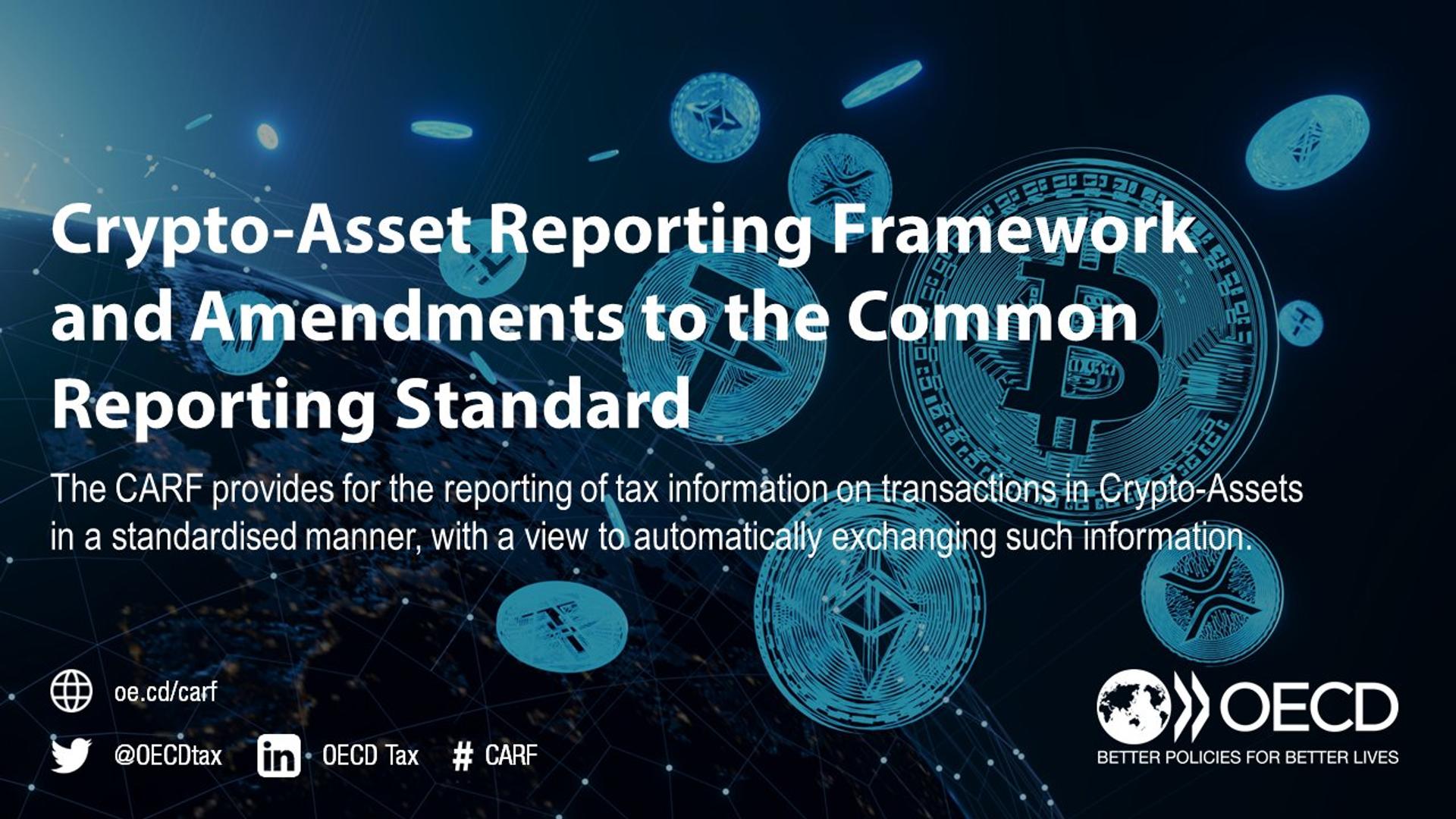
The Organization for Economic Co-operation and Development has released its new Crypto-Asset Reporting Framework (CARF), a dedicated global tax transparency framework to provide standardised and automatic reporting and exchange of information for cryptoassets. Developed amongst G20 countries, in light of the rapid worldwide growth of the crypto market, the new initiative will facilitate the exchange of information between jurisdictions on crypto-assets including, stablecoins, derivatives and even some NFTs.
Why now?
Back in 2014 the OECD published the Common Reporting Standard (CRS), a system designed to promote tax transparency for financial accounts held abroad. During the past seven years the CRS has been implemented by over 100 jurisdictions and seen huge success in the fight against international tax evasion.
Cryptoassets, developed for self-custodianship, can be held and transferred without any central administrator such as a bank or financial institution, therefore there is not full visibility on an individual’s holdings or historical transactions. Many crypto exchanges and wallet providers are unregulated which is a cause for concern for some tax authorities.
As cryptoassets do not fit within the scope of the CRS, they are seen as undermining the progress in tax transparency, and the G20 requested that the OECD developed an additional framework for the automatic exchange of information on cryptoassets between countries.
The Common Reporting Standard has been very successful in the fight against international tax evasion. In 2021, over 100 jurisdictions exchanged information on 111 million financial accounts, covering total assets of EUR 11 trillion. Today’s presentation of the new crypto-asset reporting framework and amendments to the Common Reporting Standard will ensure that the tax transparency architecture remains up-to-date and effective.
OECD Secretary-General Mathias Cormann
So, what is the CARF?
Similar to the CRS for traditional finance, the CARF will ensure tax transparency for crypto, by automatically exchanging information with the jurisdictions of taxpayers annually and in a standardised manner.

The CARF will target any digital representation of value that lies on a cryptographically secured ledger, exemptions will apply to any assets that cannot be used for payment or investment or that are already covered by the CRS.
It rules that crypto companies must report in the country where they conduct business. Transactions they will need to report include:
- exchanges between relevant crypto assets and fiat currencies
- exchanges between one or more type of crypto
- transfers of crypto (including retail payment transactions).
Alongside the launch of the CARF, amendments have also been made to the CRS to bring new financial assets, products and intermediaries within its scope. Measures have also been taken to avoid duplication of information where the two frameworks may both apply.
Wait! Isn't this mass surveillance of my crypto portfolio?

There is no escaping the fact that the CARF is attempting to have some level of surveillance on your crypto activity to ensure you are paying your taxes. Some would say this is all part of cryptoassets growing into an established asset class - I'll leave you to decide if this is a positive development.
In CARF’s current state, the information to be shared via the framework will be based on aggregate trading values. Dion Seymour, Crypto and Digital Asset Technical Director at Andersen breaks down what this means in practice and what information will be shared to HMRC.
It has to be remembered that CARF is a complex framework and, for the purpose of this blog, we are presenting a simple example.
Let’s assume I’m trading on two fictional exchanges. The first is “CoinJasper” is classed as a Reporting Crypto Asset Service Provider (RCASP) and, is located in a reporting jurisdiction. The second account is with “Wolf.io”, which would also be an RCASP had it been located in a reporting jurisdiction.
As CoinJasper is an RCASP in a reporting jurisdiction, HMRC will be provided with information about my crypto-to-crypto; crypto-to-fiat (and visa versa) transactions and transfers for each type of cryptoasset on an aggregate basis annually. However, they will not receive information from Wolf.io as it is not in a reporting jurisdiction.
However, that does not mean that Wolf.io will be invisible. Let us imagine I transferred ETH from CoinJasper to Wolf.io and then traded it for ADA. CARF requires CoinJasper to identify the transfer as it is to a non-RCASP, and HMRC can then request further information, including wallet address, from CoinJasper. So whilst HMRC will not be provided information on the exchange of ETH/ADA on Wolf.io, they will still potentially be in a position to find out about my account with Wolf.io.
Yes, HMRC and other tax authorities will be receiving a feed of crypto activity directly from the places where you trade. Aggregate value by itself isn’t enough to fully understand your tax liability, but is enough for HMRC to comprehend if you are compliant.
We strongly suggest you get your tax affairs in order. CARF shows how tax compliance for crypto is a massive concern for jurisdictions globally.
How will exchanges react?
Cryptoasset exchanges will have to invest a lot of time and resources to ensure they comply with the CARF. We hope it will go some way to standardising transaction outputs so individuals can seamlessly access their transaction history and file their taxes.
Some exchanges are already very good at enabling their customers to access transaction information via single file CSV downloads or even API connectivity that you can set up within Recap. Some exchanges, however, have not been focused on providing accurate record-keeping for their customers. We see a lot of cases of:
- missing data as a result of delisting assets
- lack of double-entry accounting
- vague accounting codes/descriptions
- ambiguous asset codes as there are no ISO standards or centralised stock exchanges to guarantee asset codes are globally unique (for example Bitcoin trades as BTC or XBT).
Recap advocates that any information sent via the framework should also be accessible to the end user in the interests of transparency.
It will be a mammoth task for some exchanges, and we wish them luck! Perhaps this is an opportunity to develop a uniform approach to cryptoasset transaction reporting.
When will the CARF be implemented?
The OECD has stated that they will be working on the legal and operational instruments to facilitate the collection and exchange of information over the next few months. We expect the framework to be live in late 2023.
If you need help with crypto tax compliance then check out Recap.


